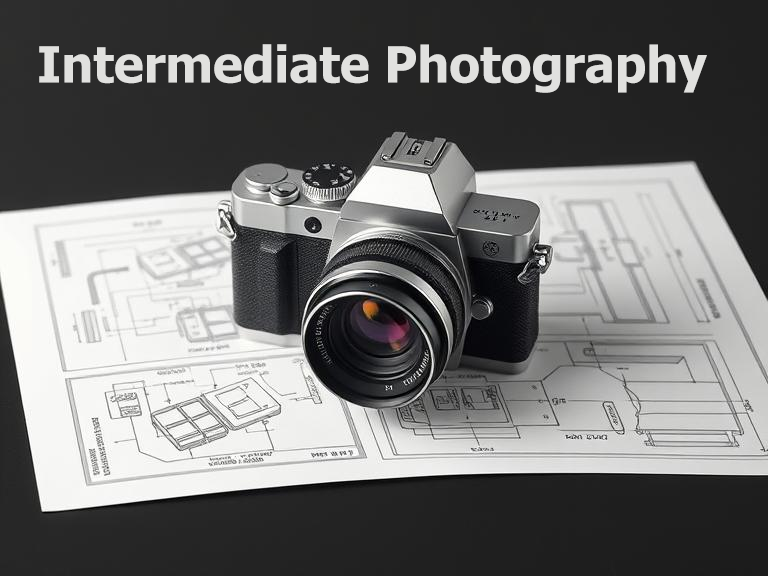Why Manual Mode?
Shifting from automatic to manual mode in photography is like trading your training wheels for a sleek motorcycle. It offers freedom, control, and ultimately, a deeper understanding of your camera’s capabilities. Picture this: you’re at a beautiful sunset, your automatic settings aren’t capturing what your eyes are seeing. That’s when mastering manual mode transforms your photography.
Full Creative Control
Unlike automatic settings, which make decisions for you, manual mode lets you dictate how you want your photo to look. You can decide the exposure, depth of field, and the degree of motion blur. This isn’t just a technical benefit—it allows you to infuse your personality and vision into each shot.
Learning the Fundamentals
By using manual mode, you inevitably dive deeper into understanding exposure triangle, which consists of ISO, shutter speed, and aperture. These basics are crucial for every photographer aiming to elevate their craft.
A Way to Stand Out
Manual mode can help your work stand out. As you tailor your camera settings to suit your artistic desires, you’ll notice your photographs begin to emit a uniqueness that sets you apart.
The Exposure Triangle
To take advantage of manual mode, you need to tackle the exposure triangle. It’s the holy trinity of photography settings that manage light and how it interacts with your camera sensor.
ISO
ISO determines the sensitivity of your camera’s sensor to light. A lower ISO is ideal for bright environments, while a higher ISO is typically utilized in low-light conditions. But beware: as you increase ISO, you also increase the noise or grain in your photo. This balance is crucial, like adjusting the volume on your favorite playlist to match the mood.
Shutter Speed
Shutter speed controls how long the camera’s shutter stays open to expose the sensor to light. A fast shutter speed will freeze motion, perfect for action shots, while a slow shutter speed can create a beautiful blur that illustrates movement. Imagine it like capturing your pet in the middle of a crazy leap or smoothing out the flow of a shimmering waterfall.
Aperture
Aperture refers to the opening in your lens that allows light to enter. This is measured in f-stops. A smaller f-stop number means a larger aperture and more light hitting the sensor. It’s like the pupil of your eye—opening wide in dim light and shrinking in bright settings. Aperture not only affects exposure but also depth of field. A large aperture (small f-stop) creates a blurred background, ideal for portraits, while a small aperture (large f-stop) keeps more of your scene in focus, perfect for landscapes.
Getting Started with Manual Mode
Stepping into manual mode can feel a tad intimidating, but with a camera in hand and a bit of patience, you’ll soon find it incredibly rewarding.
Start with the Settings
Begin by selecting manual mode on your camera. It’s typically a dial labeled “M.” Yes, it’s a simple turn, and yet so significant!
Set Your ISO First
Evaluate your lighting situation. Is it bright sunlight, a dim room, or somewhere in between? For bright conditions, keep your ISO between 100-200. For indoor settings, 400-800 is often a good starting point. Don’t be afraid to adjust as needed.
Determine Your Aperture
Next, decide the depth of field you want. Is the subject isolated with a creamy background, or is the entire scene in focus? Adjust your aperture accordingly, remembering the trade-off between aperture size and light exposure.
Finding the Sweet Spot
If you’re shooting portraits, a wider aperture (like f/2.8 or f/4) will soften backgrounds, spotlighting your subject. For landscapes or architecture, a narrower aperture (such as f/11 or f/16) captures more detail in the entire image.
Choose Your Shutter Speed
Finally, adjust your shutter speed. Fast shutter speeds freeze action – work your way up from 1/250th of a second. Slower speeds can create artistic blurs or capture the brilliance of night scenes with trails of light.
Remember the Tripod
For shutter speeds slower than 1/60th of a second, using a tripod can prevent camera shake and keep your images sharp.
Putting It All Together
Mastering manual mode requires practice and a bit of experimentation. Don’t be discouraged if your initial shots aren’t perfect. Mistakes are part of the journey.
Evaluating and Adjusting
After taking a shot, immediately check your camera’s LCD screen to analyze the exposure. Is the image too bright or too dark? Use the histogram feature if your camera has it. It provides a graphical representation of the tones in the image, helping you make precise adjustments.
Experimentation is Key
Tinker with different combinations of ISO, aperture, and shutter speed. Take a wide variety of shots in varied conditions. Each setting adjustment teaches you something new about how light behaves.
Play with Lighting
Try shooting the same subject at different times of the day to see how natural light affects your images. Notice how the golden hour can soften shadows and add warmth to your photos.
Challenge Yourself
Set personal projects or themes, like capturing movement or depth, to push the boundaries of what you know and inspire creative breakthroughs.
Record Your Lessons
Keep a journal or digital log of your settings and results. Documenting what worked, what didn’t, and why, can anchor your learning and spark improvements in future shoots.
The Joy of Manual Mastery
The journey to mastering manual mode is personal and transformative. It’s like learning to play an instrument or speaking a new language—challenging, yet infinitely rewarding. Each step you take builds your confidence, refines your skills, and ultimately enhances your ability to tell stories through your lens.
Share your creations with pride, knowing each capture is the result of your vision and mastery. In every scene, intricate detail, and play of light, let your manual mode journey unfold. Keep shooting, keep learning, and let each click resonate with your photographic soul.


